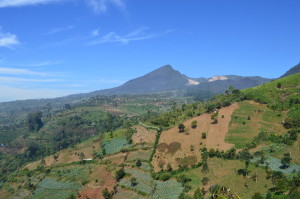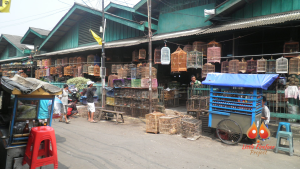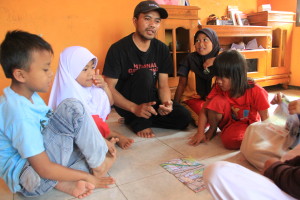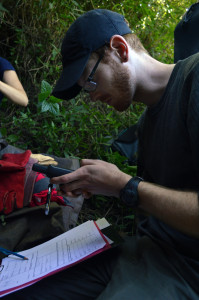Hello! My name is Robert O’Hagan. This is my first blog as research coordinator of the Little Fireface Project. I think it is fitting that the first thing I write about is the role of research in conservation. This is something that I have pondered deeply for many years, while trying to come up with new ways to conserve animals and their habitats.
In recent years, this has become a more poignant subject for me as I have encountered several people in the field of conservation that almost had me calling my views on the subject into question. I have been surprised by the lack of understanding that some people have about the role of zoological research in conservation. Worse still, I have become painfully aware that many people treat these two things as separate entities. Quite simply put, they are not.

Research is the cornerstone of any good conservation project. In order to conserve a species, one must know as much about their behaviour and ecology as possible. Unfortunately, protecting or conserving a species’ habitat is not as black and white as saying: “Stop cutting down the forest, you’re killing the animals!” Forest resources and the land they grow upon represents a livelihood for many people and quick money for local and national governments. Because you cannot simply halt this activity, you must collaborate with local, national, and international authorities as well as the local community to reach a compromise.
This compromise is often in the form of damage limitation, i.e. identifying important vegetation for a species or a set of species and then trying to integrate this with local and national land policies. For example, from our research on the Javan slow loris, we have identified tree species that are essential loris food sources (e.g. jiengjen, kaliandra merah, etc.), important sleeping sites (e.g. the bamboo species), and that provide high levels of connectivity for safe and efficient movement through the environment. These tree species can then be targeted for protection and/or reforestation. This is something that I hope to do a lot more work on this year.
Knowing an animal’s home range (by taking GPS data) allows us to say how much space an animal needs to survive and reproduce. Population surveys allow us to assess the conservation status of a species and the urgency of the conservation action required. This status can influence international trade policies and can highlight target species for conservation. Enforcement of wildlife trade laws are still lacking but they have saved many animals and will continue to do so. Wildlife market surveys, like those the LFP team carry out, can expose the extent of the terrible illegal wildlife trade, raising awareness on the issue and hopefully pressuring more law enforcers into action.

Data collected on behaviour, social organisation, and all of the above are necessary to successfully care for rescue animals and zoo animals in breeding programs. These organisations rely quite heavily on research sites like ours that study wild individuals for information on species’ diet, substrate use (for enclosure design), social organisation (for how to house animals together), etc. For the same reasons, research on wild animals is crucial to the success of reintroductions and releases (although the success of these projects varies widely and we are still learning). Oftentimes, just having a research presence is enough to deter and/or reduce poaching and logging in an area.

Education, outreach, and awareness are also fundamental to conservation. Teaching people that wildlife and their natural habitat can be helpful to them (in terms of ecosystem services, eco-tourism, etc.) and teaching them about the animal welfare issues involved in the wildlife trade and habitat destruction is essential for wildlife conservation. Education is impossible if you know nothing about the issues you are educating people on. Again, research is the key to this lock.
Long-term datasets are necessary for meaningful results and that is why long-term field sites like our field site in West Java are so important. Having said all that, research projects need to always operate within the confines of animal welfare and ethics guidelines. Any project failing to do this cannot hope to align itself with conservation goals.

Research has alerted the world to the imminent dangers of climate change, our planet’s sixth mass extinction event (which we humans have initiated), and many other things besides. Without research we would be living in ignorance and blindly diving headfirst into ecological oblivion. Because of dedicated researchers, we know what we must do to save this world and all of its inhabitants. The only question remaining is: can we stop the anthropogenic devastation currently being unleashed on the world and undo the damage we have already done? There are many amazing projects and researchers working all around the world to discover and educate. Knowledge is power and I, for one, remain optimistic for the future.
– Robert O’Hagan
